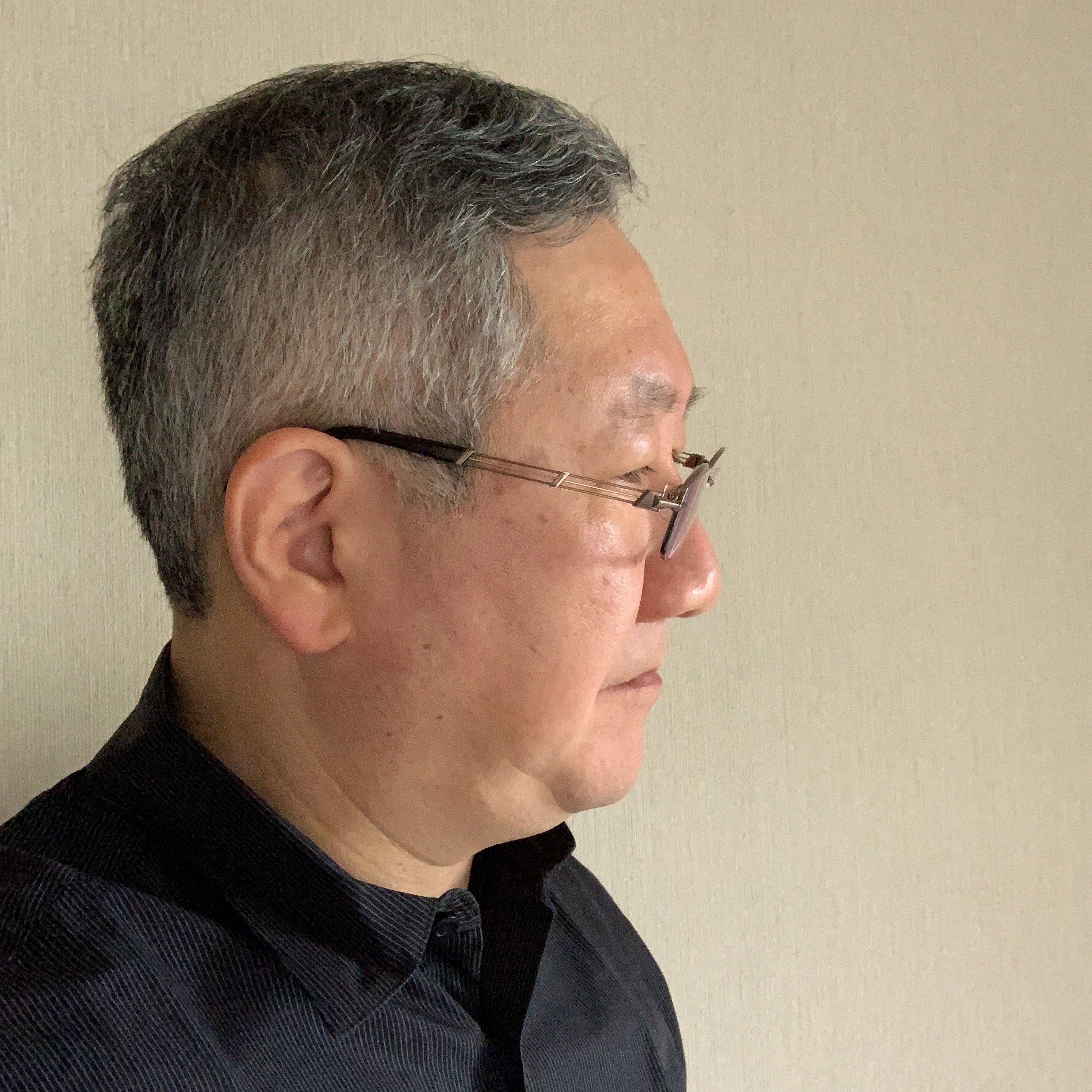
Welcome to an interview series with individuals who actually tried using the RETISSA device. This is a moment worth commemorating – we bring you the very first edition!
– It’s nice to meet you. Can you tell us a little bit about your career?
I was born in 1960 and am nearing my 60th birthday. After graduating from a science & technology university, I got a job developing software for a machine tool maker. Around 2000, I was transferred to the U.S. to work at the software development headquarters and also ended up managing off-shore development in India, etc. Later on, in 2010 I founded a software company in the U.S. We provide solutions for CAD/CAM, robot control, etc. Recently, telework has become quite the theme, so using my experience teleworking, in a sense, to connect India, the U.S., and Japan, I have been searching lately for new telework-driven manufacturing.
– Can you tell us about your eyes and your vision?
The year before last, the retina of my right eye detached. At the time I was very busy and also thought that it might get better if I left it alone, so there was some delay, but I did meet with a good ophthalmologist who performed surgery on me. During the surgery, the lens of my eye and the area around it was extracted. A new artificial lens like the kind used for cataracts was not placed in my eye; in fact, there is no lens at this time.
– Normally how do you go through a regular day? Is there anything you find to be inconvenient?
I normally wear glasses. Originally I had anisometropia (note: when two eyes have unequal refractive power), and the vision in my right eye was poor, so I didn’t use it very much. As a result, I think I’ve become quite used to putting up with that. If I use glasses that are prescribed for acute farsightedness, I can see quite clearly through my right eye, but my left eye then goes out of focus, so I don’t have them corrected to that degree. I hear that there’s a contact lens for this, but I haven’t tried it yet. I wore contact lenses when I was young, but they always seemed like too much trouble…
In my daily life, there are things that are inconvenient. When I look at the monitor of a PC, somehow I get by just using one eye. However, when I’m walking or doing housework, I have difficulties. For example, when hanging up my clothes to dry, I often bump my head on the drying rod. Also, when I pour beer into a glass, sometimes it spills outside the glass… After all, it seems that it’s difficult to get a sense of perspective.
– Do your eyes ever feel tired?
They do. Some of it may be due to my age, but I also feel that I can no longer handle the amount of work that I used to. I cannot concentrate for as long.
It’s incredibly difficult to match the left and right vision (binocular fusion). Things considerably misalign and overlap.
– How did you learn about our technology?
Because of my work, I have always been interested in head-mounted displays (HMD). In the fields I work in, utilizing VR/AR/MR has become key. I saw QD Laser’s HMD at an exhibition but didn’t quite have the opportunity to try it.
When I underwent surgery, my lens was indeed extracted, but I knew that I might be able to see through direct projection to my retina, so finally, I decided to try it out.
– How was your experience actually using the RETISSA device?
Just putting on the device, I could normally see a video. (I had gotten used to not seeing it very well so) seeing normally was a surprise. Though there may have been some slight distortion, I found that my retina was functioning more appropriately than expected.
I have tried several HMDs on the market, but they were bulky or hard to use. The RETISSA was easy to see through, and I am thinking I would like to try using it to see a variety of information.
– What are you hoping to use it for?
The simple fact that it’s a display actually makes it really easy to use. Many overseas corporations are also working on technology like this and this device would be able to become part of their platform. The CAD/CAM world is based on Windows, so it would be good if it could easily interoperate with this.
Due to the current situation, customers have had a strong interest in solutions using HMD. From here on out, I think that interest will grow.
Also, if it were combined with a digital camera, I’m hoping that I could also “see” then. It might be nice to be able to zoom in, zoom out, and align the imaging position just right. I hear that there is a model with a camera inside the frame that is already in development (note: he is referring to the medical device model, RETISSA Medical).
– On the other hand, are you hoping that any particular part of it is improved?
It seems that the light travels through your pupil, but it may be slightly disadvantageous that when my eyes move, sometimes I am unable to see. There are technologies that can detect a driver’s line of sight and tell when they are drowsy, etc. It would be great if you could combine this technology (eye tracking) into the device.
– Thank you for your cooperation with this interview.
Thank you.
Ø This interview took place online on May 18th.
Ø These are the impressions of the individual. There may be individual differences in vision.
Ø The RETISSA Display series is not a medical device. It is not intended for use to improve one’s vision or treat a particular condition.
